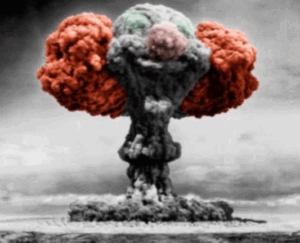The Tension Between India and Pakistan: An Economic Perspective on a Complex Historical Rivalry

In recent years, we have seen mounting tensions between India and Pakistan, a relationship fraught with historical animosities and ongoing conflicts that could have devastating implications for the region and the world at large. While conflict is not new, current developments have raised alarms among economists and geopolitical analysts alike. How do we navigate the economics behind this enduring rivalry? Here’s an in-depth look at the situation as we gear up for what could become a pivotal moment in South Asian history.
Insights from the Past, Predictions for the Future
Multiple forecasts have warned that hostilities could escalate into outright conflict. Notably, predictions from Socrates, a well-known economic forecasting model, suggested that we would see significant tensions arise between these two nuclear-armed neighbors around 2025. Given recent reports of increased military movements and the suspension of diplomatic relations, many are wondering if this forecast will come to fruition.
Recent Developments: A Tailspin Towards War

According to reports, Pakistan has temporarily closed its airspace in response to a missile test planned off its coast, aimed at demonstrating military readiness amidst growing tensions. India has responded by suspending the historic Indus Waters Treaty, which governs water-sharing between the two countries, thus igniting what some have termed a ‘water war.’ These escalating events raise questions about economic stability in the region.
The heart of the dispute lies in Kashmir, a resource-rich region that has been a flashpoint for conflict for decades. The situation was exacerbated after recent terror attacks attributed to Pakistan-based groups. Each side is ramping up military presence and expelling diplomats, leading to fears of a further breakdown in relations.
The Economic Impact: More than Just a Military Conflict
Tensions between India and Pakistan aren’t just about military might; they have profound economic implications. The South Asian region is strategically important, with trade routes and resources that impact not just India and Pakistan, but also global markets. Should conflict escalate, we could see a ripple effect in commodity prices, particularly in sectors related to energy and agriculture.
Moreover, both nations already face economic challenges, such as inflation, unemployment, and public debt. A full-blown conflict could exacerbate these issues, leading to increased poverty and instability—conditions that would likely fuel more conflict and resentment.
Historical Context: The Roots of Conflict
The roots of this conflict date back to the partition of British India in 1947. Driven by religious tensions and political demands for separate nations, this seminal moment created borders that fragmented communities and sowed distrust. The aftermath saw violent clashes and a mass exodus of populations, exacerbating resentment that has lingered through generations.
The partition remains a defining moment that shapes the geopolitical landscape of South Asia. The inability to resolve longstanding issues—most notably the status of Kashmir—leaves both nations in a perpetual state of tension, echoing the old adage that history is often cyclical.
Economic Solutions: Toward a Lasting Peace
At Extreme Investor Network, we believe that understanding the economic factors influencing such conflicts is crucial for fostering a lasting peace. Crafting economic policies that promote cooperation—rather than conflict—could be a pathway forward.
-
Promote Trade and Investment: Encouraging economic collaboration may reduce tensions. Increased trade could enhance interdependence, making war less desirable for both sides.
-
Water Sharing Agreements: An equitable management of water resources can serve as a foundation for trust and dialogue.
- Conflict Resolution Initiatives: Engaging neutral international parties to mediate and encourage dialogue between India and Pakistan may mitigate hostilities and promote understanding.
In Summary
The relationship between India and Pakistan is complex and deeply rooted in historical grievances and economic stakes. While the potential for conflict looms, the onus is on both nations—and indeed the international community—to seek constructive, economic-driven solutions for a more peaceful coexistence.
As we watch the geopolitical landscape evolve, we’ll continue to provide updates and insights through our platform, Extreme Investor Network, where we strive to deliver not only analysis but also forward-thinking solutions to the pressing issues of our time.
Stay tuned and informed—navigating the world of economics and geopolitics requires all of us to stay ahead of the curve.

